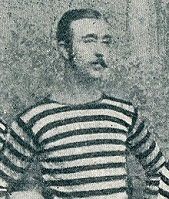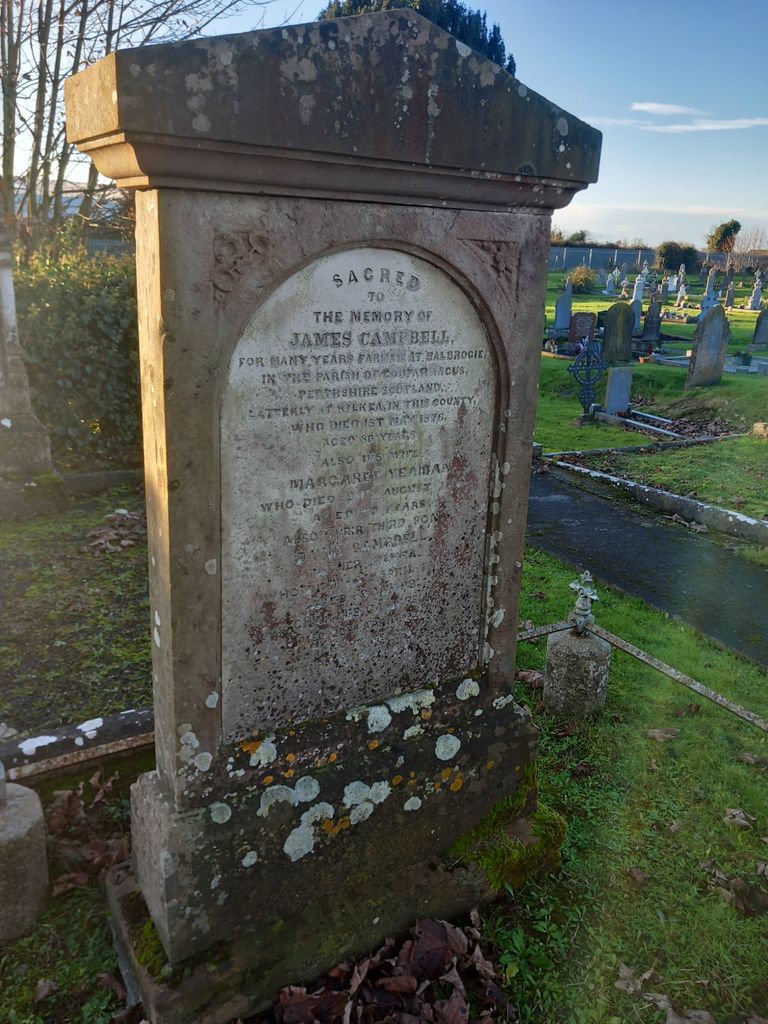Charles Campbell

Charles Campbell was perhaps the greatest of the second wave of Queen's Park players. And like many of the first, the founders and the team of 1872, he too was not from Glasgow. Born in 1854 at Balbrogie by Coupar Angus he was the youngest of thirteen children of a well-to-do, tenant farming family, which through marriage and connections would forge links to a number of locations in Southern Ireland, notably Kilkea in Co. Kildare close to the Galway border. It is even said that Charles, having spent some part of his childhood across the water, considered himself as much Irish as Scots.
Nevertheless, he was sent to Scotland to school, by one report to the Edinburgh Institution by another to Edinburgh Academy. However, both played rugby yet Campbell, despite being imposing, standing over six feet tall, on leaving education and moving to Glasgow for work turned to football. He followed his elder brother, Edward, in, at sixteen, joining Queen's Park in 1870, was lodging in 1871 as a Commercial Clerk at 4, Albert Drive, Cathcart, in October 1873 made his debut, aged 19, for its First Team, in 1881, still a Clerk, now with an Iron Merchant, lodging at Kilmailing Terrace, again in Cathcart, and would turn out for the club until 1886, eighty odd games in all. He would do so mostly under his name but also as C. "Elliott". Why the pseudonym is unclear beyond it being the middle name of his deceased, elder sister, Isabella.
Throughout his career Campbell played almost always at half-back. He was on the right in what was then a pairing in winning the 1874 Scottish Cup Final, he had been there in winning the first of thirteen Scotland caps two weeks earlier and there still a dozen years later in winning the 1886 Scottish Cup Final and in his last international, a home draw with England that same year. And in between he had been multiple captain of both club and country and played in further Scottish Cup Finals in 1875, 1876, 1880, 1881 and the 1882 replay, plus two FA Cup Finals, in 1884 and 1885.
And nor was his contribution to club and county confined to playing. He would be a member of the Queen's Park committee from 1874 until 1890, club President in 1879-80, the season that saw the beginning of the its revival, its second wind, refereed the 1889 Scottish Cup Final and be President of the SFA in 1889-90. Only then, as the amateur era, of which he had been such a part, came to an end, did he step away, apart from coaching, remaining in Glasgow, never marrying and working latterly per se as an Iron Merchant. And he would throughout remain living at Kilmailing Terrace with a schoolmaster, James Christie, and the latter's aged aunt. That was until about 1907 when he moved permanently across the Irish Sea to take on the running of the farm the family had held for several years. And it was there at Kilkea he died in 1927 to be buried alongside his father, James, mother and an elder brother in St. Michaels Old Graveyard at nearby Athy.

Birth Locator:
1854 - Balbrogie Farm, Coupar Angus
Residence Locations:
1871 - 4, Albert Drive, Cathcart
1881-1901 - 4, Kilmailing Terrace, Old Cathcart
1927 - Killkea, Co. Kildare, Eire
Grave Locator:
St. Michaels Old Graveyard, Athy, Co. Kildare, Eire
Back to the Irish Trail,
the Cart Trails
or the SFHG Home page